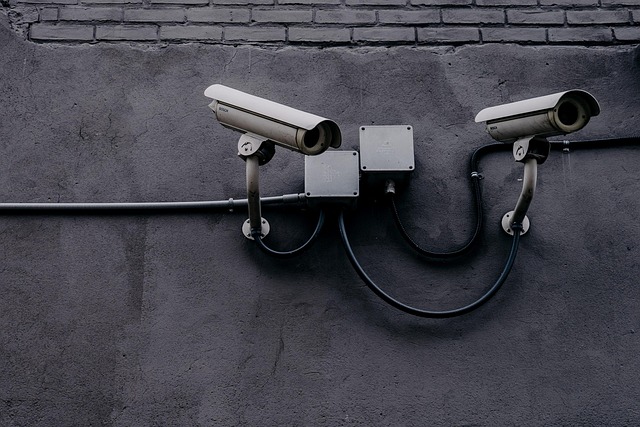Advanced smart home security combines integrated devices like smart locks, alarms, cameras, and surveillance systems for comprehensive protection. Features like remote monitoring, live video streaming, motion detection, and biometric authentication enhance safety. Wireless security systems offer flexible deployment with high-quality sensors and smartphone apps. Best practices include strategic sensor placement, strong Wi-Fi signals, and upgrading to modern technology for optimal peace of mind.
“Enhance your home’s security with the latest in smart home technology. This comprehensive guide explores advanced smart home security system installation, offering an insightful overview of modern protection. From understanding intricate components like smart locks and alarms to leveraging remote monitoring for peace of mind, we delve into the benefits and best practices.
Discover how wireless security systems, equipped with surveillance cameras, transform your house into a fortress. Learn the secrets to successful setup, ensuring optimal home automation security.”
- Understanding Advanced Smart Home Security Systems: An Overview
- Components of a Comprehensive Smart Home Security Setup
- Benefits of Implementing Remote Monitoring and Control
- The Role of Smart Locks, Alarms, and Surveillance Cameras
- Wireless Security Systems: Installation Tips and Best Practices
Understanding Advanced Smart Home Security Systems: An Overview

Advanced Smart Home Security Systems offer unparalleled protection and peace of mind in today’s digital era. These cutting-edge solutions integrate various interconnected devices, such as smart locks, alarms, cameras, and surveillance systems, to create a comprehensive security network. Home automation security features enable remote monitoring from anywhere, allowing homeowners to keep an eye on their properties via live feeds, motion sensors, and intelligent alerts.
Wireless security systems, free from the clutter of wires, provide flexible deployment options. Smart home cameras, equipped with advanced AI capabilities, can differentiate between familiar faces, pets, and potential intruders, ensuring false alarms are minimised. Together, these automated security solutions not only deter theft but also facilitate quick response times through immediate notifications and remote control capabilities, making them game-changers in home protection.
Components of a Comprehensive Smart Home Security Setup

A comprehensive smart home security setup is a multi-layered system that integrates various components to provide robust protection. The foundation lies in installing high-quality, wireless security systems that include motion detectors, door and window sensors, and glass break sensors. These devices are linked to a central control panel, enabling immediate alerts and remote monitoring through a dedicated app on your smartphone or tablet.
Enhancing this setup with smart locks and alarms further bolsters security. Smart locks allow for keyless entry using biometric authentication or mobile access, while integrated alarms can detect intrusions and notify you via real-time alerts. Additionally, smart surveillance cameras equipped with advanced features like night vision, motion detection, and two-way audio provide visual evidence and enhance situational awareness. Automated security solutions, such as automated lighting adjustments to mimic occupancy, add another layer of protection by deterring potential intruders.
Benefits of Implementing Remote Monitoring and Control

Implementing remote monitoring and control is a significant step in enhancing your smart home security system. It allows homeowners to keep an eye on their property from anywhere, at any time. With features like live video streaming and motion detection, smart cameras provide continuous surveillance, ensuring immediate alerts for any suspicious activity. This advanced technology offers peace of mind by enabling users to remotely unlock doors with smart locks and trigger alarms if needed, all through a simple smartphone app.
Remote monitoring security extends beyond the physical space. Home automation security integrates various devices into a unified system, creating an intelligent environment. Smart surveillance systems collect data without constant human intervention, making them efficient and cost-effective. Wireless security systems, free from tangled wires, offer flexibility in installation and easy updates. These automated security solutions collectively contribute to a safer, more comfortable living space.
The Role of Smart Locks, Alarms, and Surveillance Cameras

In the realm of advanced smart home security systems, components like smart locks, alarms, and surveillance cameras play a pivotal role in enhancing safety and peace of mind for homeowners. Smart locks, for instance, offer not just convenience but robust security features such as remote unlocking via smartphone apps, biometric authentication, and activity logging. This enables users to monitor access points and control who enters their homes, even when they’re away.
Alarms, integrated with home automation security systems, provide a multi-layered defense. Wireless security systems allow for real-time remote monitoring through smart home cameras, ensuring homeowners can respond swiftly to any intrusions or suspicious activities. Advanced surveillance technology, such as high-definition video feeds and motion detection, captures clear evidence while sending alerts directly to the user’s device, making it easier than ever to protect one’s property using modern, automated security solutions.
Wireless Security Systems: Installation Tips and Best Practices

When installing a wireless security system for your smart home, ensuring proper placement and configuration is paramount. Wireless signals can be affected by physical barriers like walls and furniture, so strategic positioning is key to maintain robust connectivity across your property. Place sensors and cameras in unobstructed areas, considering common entry points such as doors and windows. Additionally, positioning them close to power sources minimizes signal interference, enhancing the overall stability of your smart security systems.
Best practices for wireless security installation include running a thorough network assessment to identify any potential dead zones before deployment. Using high-quality accessories and following manufacturer guidelines will optimize performance and ensure compatibility with your existing home automation security setup. Remote monitoring security features benefit greatly from reliable internet connectivity, so position cameras and alarms in areas with strong Wi-Fi signals. Upgrading to newer technologies like smart locks and advanced surveillance systems can significantly enhance the capabilities of your automated security solutions, providing peace of mind and a secure living environment.
Advancing your home’s security with an advanced smart security system is a proactive step towards safeguarding your space. By integrating components like smart locks, alarms, and surveillance cameras, you gain unparalleled control and peace of mind. Remote monitoring capabilities allow you to stay connected, ensuring quick responses during emergencies. This comprehensive guide has outlined the essential elements of a robust smart home security setup, wireless installation tips, and the myriad benefits these systems offer. Embrace modern technology with automated security solutions for a safer, more efficient home environment.
